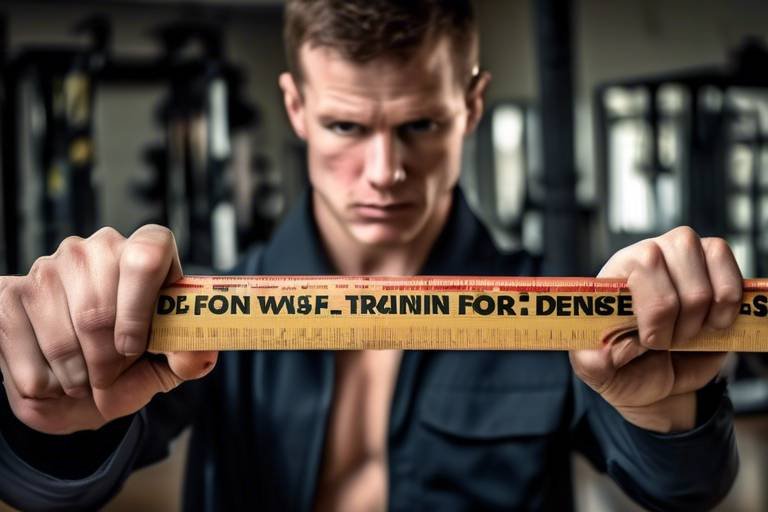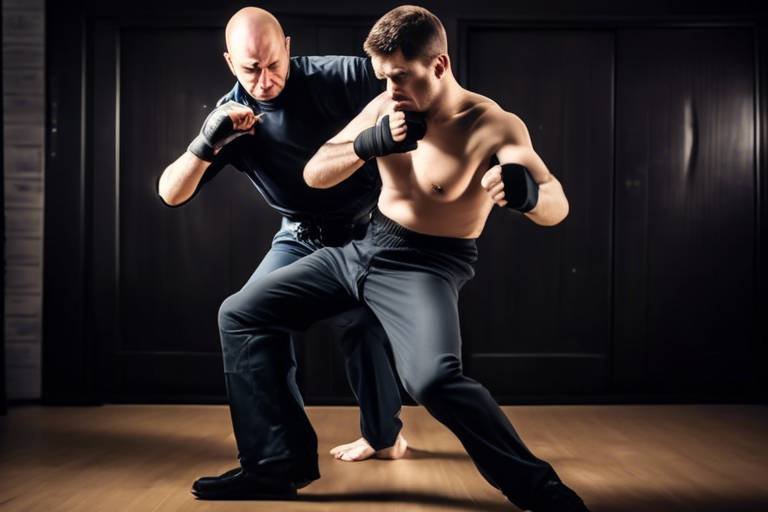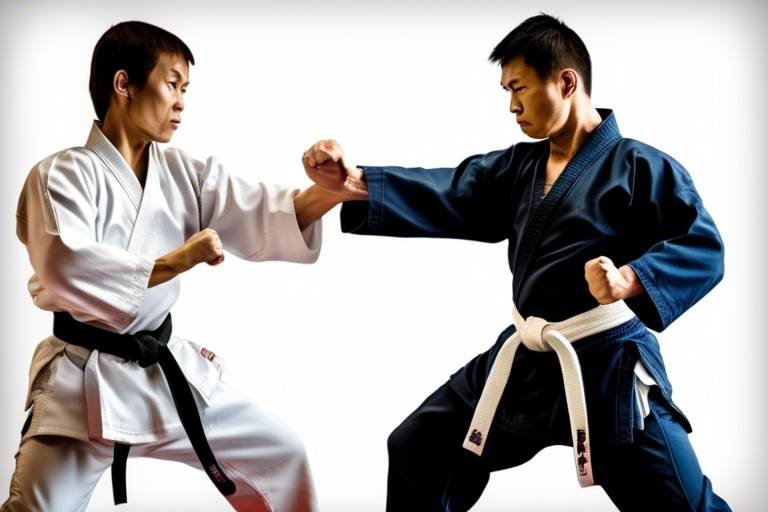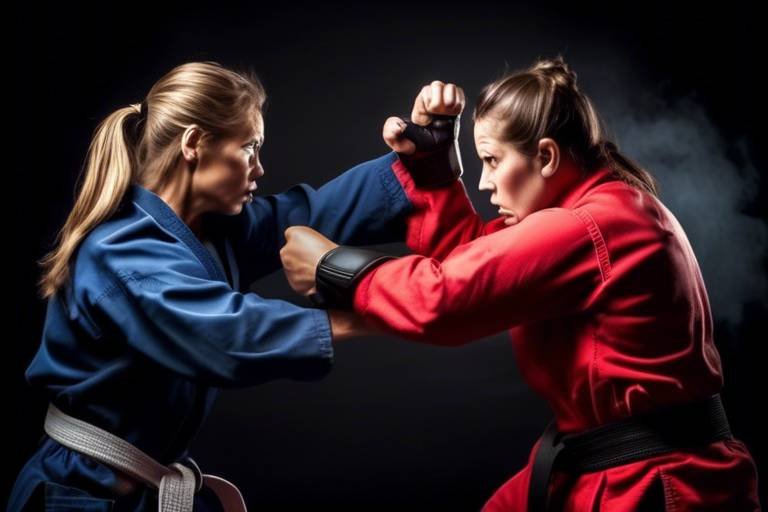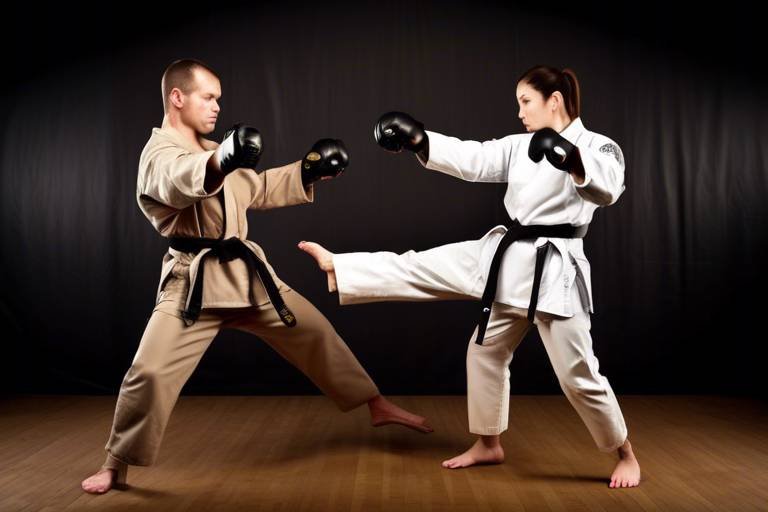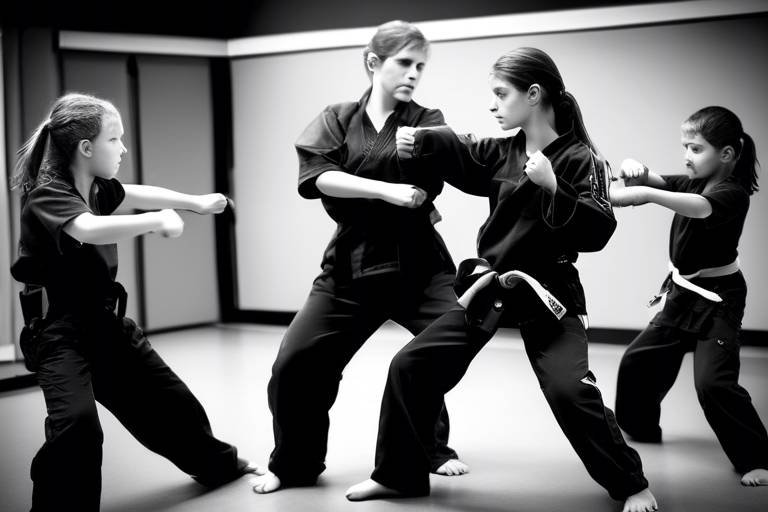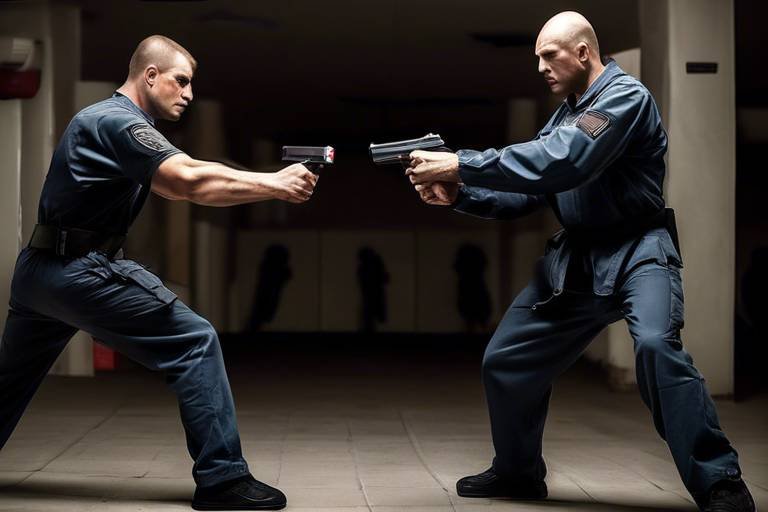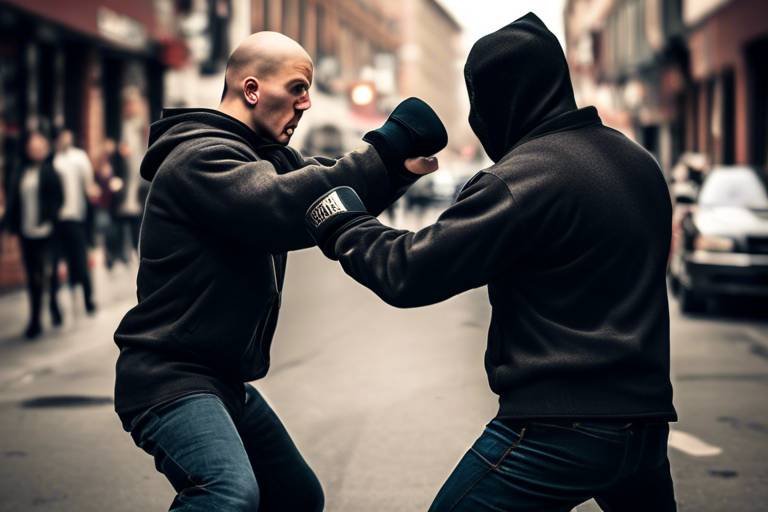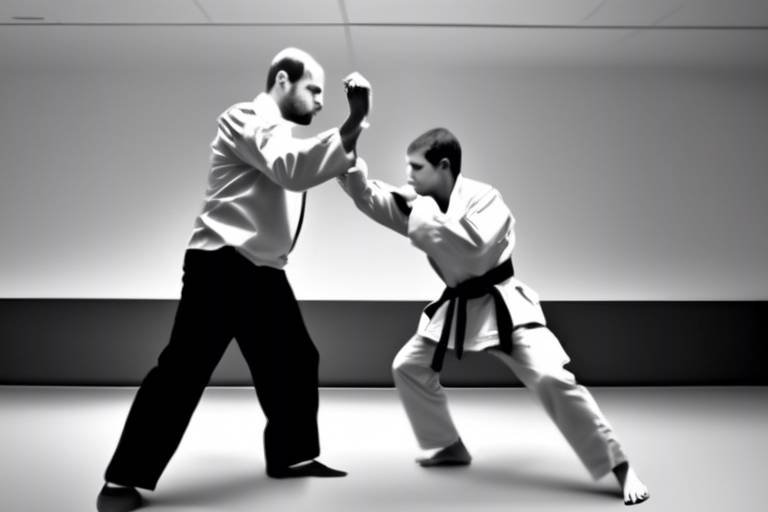Techniques of Using a Walking Cane in Self-Defense Training
In today's world, personal safety is a priority for many individuals. While traditional self-defense weapons like pepper spray or personal alarms are common, one often-overlooked tool is the humble walking cane. Not only does it assist those with mobility issues, but it also offers a surprising array of techniques that can be employed for self-defense. This article explores effective techniques for utilizing a walking cane as a self-defense tool, highlighting its advantages, basic maneuvers, and practical applications for personal safety.
A walking cane serves as both a mobility aid and a self-defense weapon. It’s not just a stick to lean on; it can be a formidable tool in the right hands. There are various types of canes available, each with unique features that enhance their self-defense capabilities. For instance, some canes are designed with a thicker shaft for better grip, while others might have pointed tips or even concealed self-defense gadgets. Understanding these differences can help you choose the right cane for your needs. The versatility of a walking cane makes it a perfect candidate for self-defense training, as it combines functionality with the element of surprise.
Mastering fundamental techniques is essential for effective self-defense. The key to using a cane in self-defense lies in understanding basic strikes, blocks, and defensive maneuvers that can be performed with it. Think of your cane as an extension of your arm; with the right techniques, it can become a powerful ally. Basic techniques include:
- Strikes: Utilizing the cane to deliver quick, powerful strikes to an assailant's vital points, such as the head or knees.
- Blocks: Using the cane to deflect incoming attacks, protecting yourself while maintaining a defensive posture.
- Defensive Maneuvers: Employing footwork and body mechanics to create distance and evade threats effectively.
A proper grip and stance are crucial for balance and control. When holding the cane, ensure that your grip is firm but relaxed, allowing for quick movements. Your stance should be shoulder-width apart, with one foot slightly in front of the other to maintain stability. This positioning not only helps you balance but also prepares you to react swiftly to any situation. Imagine yourself as a tree rooted in the ground, strong and unyielding, ready to sway with the wind but never breaking.
Good footwork enhances mobility and positioning. Just like a dancer moves gracefully across the floor, your feet should be light and agile. Practicing basic footwork techniques, such as shuffling and pivoting, can help you maintain your balance while preparing to strike or block. Remember, you can’t defend yourself effectively if you’re stuck in one place. Move with intention and purpose, keeping your cane ready to respond to any threat.
Understanding body mechanics maximizes the effectiveness of your strikes. Your body weight and leverage play a significant role in how powerful your strikes can be. When you swing your cane, shift your weight from your back foot to your front foot, allowing your whole body to contribute to the movement. Think of it like a whip; the more you use your body to create momentum, the more forceful your strike will be. This connection between your body and the cane is what transforms a simple mobility aid into a potent self-defense tool.
Once basic techniques are mastered, practitioners can explore advanced maneuvers. This includes more complex strikes and defensive tactics that can be executed with a cane. For example, learning to perform a spinning strike can catch an assailant off guard, while advanced blocking techniques can help you deflect multiple attacks. Training regularly will improve your reflexes and build your confidence, making you a more formidable opponent.
Being aware of your surroundings is vital for self-defense. A walking cane can only be effective if you are alert and ready to use it. Developing situational awareness involves understanding your environment and recognizing potential threats before they escalate. This means paying attention to the people around you, the layout of the area, and any unusual behavior that might indicate danger.
Recognizing different types of threats allows for better preparation. Not all situations require physical confrontation; sometimes, simply being aware can help you avoid potential danger altogether. Assessing situations involves looking for signs of aggression, such as a person approaching you too quickly or invading your personal space. Trust your instincts; if something feels off, it probably is.
Not all confrontations require physical action. In many cases, verbal de-escalation strategies can be employed before resorting to physical defense with a cane. Using calm, assertive communication can often diffuse a tense situation. Phrases like “I don’t want any trouble” or “Let’s talk this out” can work wonders in turning a potential conflict into a conversation. Remember, the goal is to protect yourself, and sometimes that means avoiding a fight altogether.
1. Can anyone use a walking cane for self-defense?
Yes, anyone can learn to use a walking cane for self-defense, regardless of age or physical ability. Training is essential to ensure effective use.
2. Do I need special training to use a walking cane for self-defense?
While basic techniques can be learned independently, formal training is recommended to master advanced techniques and ensure safety.
3. Is it legal to carry a walking cane for self-defense?
In most places, carrying a walking cane is legal. However, it’s essential to check local laws regarding self-defense weapons.
4. What type of cane is best for self-defense?
A sturdy, well-balanced cane with a comfortable grip is ideal. Some may prefer canes with special features like pointed tips for added effectiveness.

Understanding the Walking Cane
A walking cane is not just a simple mobility aid; it can also serve as a potent self-defense weapon. Many people often overlook the potential of a cane in personal safety scenarios, but with the right techniques and understanding, it can be transformed into a formidable tool for protection. Canes come in various designs, materials, and functionalities, each offering unique features that enhance their self-defense capabilities. Understanding these differences is crucial for anyone looking to incorporate a walking cane into their self-defense training.
There are essentially two main types of canes: traditional canes and self-defense canes. Traditional canes are primarily designed for support and stability, while self-defense canes are specifically crafted with features that facilitate combat techniques. For instance, self-defense canes may come with a thicker shaft, a curved handle for better grip, or even hidden compartments for carrying small self-defense tools. The choice of cane can greatly influence your effectiveness in a self-defense situation.
When selecting a walking cane for self-defense, consider the following factors:
- Material: Canes can be made from wood, metal, or composite materials. Each has its own weight and durability, which can affect your ability to wield it effectively.
- Length: A cane that is too long or too short can hinder your movement. Ideally, it should be about the height of your hip when standing.
- Grip: A comfortable grip is essential for control. Look for canes with ergonomic handles that fit your hand well.
In addition to these physical attributes, it’s important to understand the psychological aspect of using a cane as a self-defense tool. The mere presence of a cane can deter potential attackers, as it signals that you are prepared to defend yourself. Moreover, wielding a cane effectively requires practice and confidence, both of which can be developed through training. By mastering the techniques associated with cane self-defense, you not only enhance your personal safety but also gain a sense of empowerment.
Ultimately, understanding the walking cane involves recognizing its dual purpose. It is a tool for mobility and a weapon for defense. This duality is what makes it such a valuable asset in self-defense training. As you explore the various techniques and strategies for using a cane, remember that the goal is not just to learn how to strike but also to cultivate the awareness and confidence needed to navigate potentially dangerous situations.

Basic Cane Techniques
When it comes to self-defense, mastering the is your first line of defense. Think of the cane not just as a mobility aid, but as an extension of your body, a tool that can help you maintain your personal safety. The effectiveness of a cane in self-defense lies in its ability to deliver powerful strikes, create defensive barriers, and enhance your overall mobility. Let’s delve into the fundamental techniques that will empower you to wield your cane with confidence.
One of the first things to understand is the importance of strikes. A well-aimed strike can incapacitate an attacker, giving you precious moments to escape. Common strikes include:
- Jab: A quick thrust aimed at the attacker's body, particularly effective at close range.
- Side Swipe: A horizontal swing that can knock an assailant off balance.
- Overhead Smash: A powerful downward strike that targets the head or shoulders.
Each of these strikes can be executed with a simple flick of the wrist, but they require practice to perfect. Remember, the goal is to strike quickly and effectively, creating a moment of surprise that can allow you to escape.
In addition to strikes, blocks are crucial for defending against incoming attacks. The cane can serve as a formidable shield. When an attacker approaches, you can use your cane to:
- Parry: Redirect the force of an incoming strike away from your body.
- Deflect: Use the cane to push aside an attack, creating space between you and the assailant.
By integrating these blocking techniques into your training, you’ll be able to protect yourself while positioning yourself for a counterattack.
Now, let’s talk about grip and stance. The way you hold your cane can significantly affect your control and effectiveness. A proper grip involves wrapping your dominant hand around the handle, while your other hand should support the cane further down its length. This grip not only provides stability but also ensures that you can quickly transition between offensive and defensive maneuvers.
Your stance should be balanced and ready for action. Stand with your feet shoulder-width apart, knees slightly bent, and the cane held at a 45-degree angle in front of you. This position allows for quick movements in any direction, whether you need to strike or evade. Think of your stance as the foundation of a house; without a solid base, everything else can crumble.
Good footwork is essential in any self-defense scenario. It’s not just about being able to strike; it’s about being able to move fluidly and decisively. Practice stepping forward and backward while maintaining your stance. This will help you close the distance when you need to strike or create space when you need to retreat. Incorporate lateral movements as well, allowing you to evade attacks and reposition yourself for a counterstrike.
Understanding body mechanics is key to maximizing the effectiveness of your strikes. Use your body weight to generate power, rather than relying solely on your arm strength. For instance, when delivering an overhead smash, engage your core and legs to add force to the strike. Imagine your cane as a lever; the more you can utilize your body to create motion, the more impact you can deliver. Proper mechanics not only enhance your strikes but also reduce the risk of injury to yourself.
In conclusion, mastering these basic cane techniques is essential for anyone looking to enhance their self-defense skills. The cane is more than just a support tool; it can be a powerful weapon in the right hands. By practicing your strikes, blocks, grip, stance, footwork, and body mechanics, you’ll be well on your way to becoming proficient in cane self-defense. Remember, confidence comes from practice, so grab your cane and start training!

Grip and Stance
When it comes to using a walking cane for self-defense, are paramount. Think of your cane as an extension of your body; the way you hold it can significantly influence your control and effectiveness in a defensive situation. A proper grip allows for quick maneuvers and the ability to deliver powerful strikes, while a solid stance provides the necessary balance to support those actions.
To achieve the right grip, grasp the cane firmly with your dominant hand, ensuring that your fingers wrap around the handle securely. Your thumb should press against the cane, providing additional stability. This grip not only helps in executing strikes but also in blocking incoming attacks. Imagine holding a baseball bat; you wouldn’t grip it loosely, would you? The same principle applies here. A loose grip can lead to losing control of your cane, which is the last thing you want in a self-defense scenario.
Now, let’s talk about your stance. Stand with your feet shoulder-width apart, knees slightly bent, and your weight evenly distributed. This position is similar to a boxer’s stance, where you’re ready to move in any direction. Your non-dominant foot should be slightly forward, providing a base for quick lateral movements. This setup not only enhances your stability but also prepares you for swift action, whether it’s striking, blocking, or retreating. Remember, the goal is to be both defensive and offensive at the same time.
Here’s a quick recap of the essential elements for grip and stance:
- Grip: Firmly hold the cane with your dominant hand, ensuring your fingers wrap around the handle and your thumb presses against it.
- Stance: Stand shoulder-width apart with knees slightly bent, weight evenly distributed, and non-dominant foot slightly forward.
Practicing these elements regularly will enhance your confidence and efficiency in using the cane for self-defense. Just like any skill, mastering grip and stance takes time and practice, so don’t get discouraged if it doesn’t feel natural right away. The more you practice, the more instinctive it will become, allowing you to react swiftly when it matters most. So, grab your cane and start honing those skills!

Footwork Fundamentals
When it comes to self-defense, the importance of footwork cannot be overstated. Think of your feet as the foundation of a house; without a solid base, everything else is at risk of collapsing. In the context of using a walking cane for self-defense, good footwork not only enhances your mobility but also allows you to maintain balance and control during a confrontation. Imagine being like a dancer, gracefully moving in response to your opponent's actions while keeping your cane poised for defense or attack.
First and foremost, you need to understand the basic movements that will keep you agile. The primary footwork techniques to focus on include the step-and-slide, pivot, and shuffle. These movements will enable you to reposition yourself quickly, making it harder for an assailant to predict your actions. For instance, the step-and-slide technique allows you to move forward or backward while keeping your cane ready for a strike or block. On the other hand, pivoting helps you change directions swiftly, which can be crucial if you need to evade an attack.
Here’s a simple breakdown of these footwork techniques:
| Technique | Description |
|---|---|
| Step-and-Slide | Move one foot forward or backward and slide the other foot to maintain balance. |
| Pivot | Rotate on the balls of your feet to change direction while keeping your body aligned. |
| Shuffle | Quickly move sideways to create distance or reposition yourself. |
In addition to these techniques, it's essential to practice maintaining a low center of gravity. Bending your knees slightly and keeping your feet shoulder-width apart will give you a stable stance, making it harder for an opponent to knock you off balance. Think of a tree rooted firmly in the ground; the stronger the roots, the less likely it is to topple over in a storm.
Moreover, incorporating dynamic movement drills into your training can significantly enhance your footwork. For example, practice moving in different directions while simulating an attack or block with your cane. This not only builds muscle memory but also helps you become more comfortable and confident in your movements. You might even consider setting up a small obstacle course where you can practice dodging and weaving while wielding your cane, allowing you to adapt to various scenarios you might encounter in real life.
Lastly, remember that footwork is not just about movement; it's also about timing. Being able to anticipate an opponent's actions and respond with the right footwork can make all the difference. It’s like playing a game of chess; you need to think several moves ahead to stay one step ahead of your opponent. So, as you practice these footwork fundamentals, keep in mind the importance of being aware of your surroundings, and always be ready to adjust your position as necessary.

Body Mechanics
Understanding is crucial when wielding a walking cane for self-defense. Just like a well-oiled machine, your body needs to work in harmony with the cane to maximize your effectiveness. Think of it this way: if you’re trying to hit a target with a baseball bat, your swing isn’t just about the bat itself; it’s about how you position your body, shift your weight, and follow through. The same principle applies to using a cane.
First, let’s talk about weight distribution. When you strike with your cane, your body weight should flow through your arms and into the cane, enhancing the force of your strikes. If you’re standing still, make sure your weight is evenly distributed between your feet. This stance not only provides stability but also prepares you to pivot or move quickly if necessary. When you’re ready to strike, shift your weight onto your back foot, then transfer it to your front foot as you execute the move. This shift generates power and keeps you balanced.
Next, consider your hip movement. Your hips are the powerhouse of your body mechanics. When you throw a punch or swing your cane, your hips should rotate to add momentum. Imagine your hips as the engine of a car; without proper rotation, you’re not going to get very far. Practice rotating your hips as you swing the cane. This not only increases your striking power but also helps you maintain your balance, allowing for a smoother follow-through.
Another key component of body mechanics is hand positioning. The grip you have on the cane can significantly affect your control and the effectiveness of your strikes. A firm but relaxed grip is ideal; too tight, and you risk losing fluidity in your movements. Too loose, and you might drop the cane at a critical moment. Your hands should be positioned so that the cane feels like an extension of your arm. Practice holding the cane at different angles to see how it affects your reach and striking capability.
To put all of this into practice, consider the following exercise that combines these elements:
| Step | Action | Focus |
|---|---|---|
| 1 | Stand with feet shoulder-width apart, cane in hand. | Weight distribution |
| 2 | Shift your weight to your back foot. | Balance |
| 3 | Rotate your hips as you swing the cane forward. | Power generation |
| 4 | Follow through, returning to a balanced position. | Fluidity |
By focusing on these aspects of body mechanics, you’ll find that your ability to wield a walking cane for self-defense becomes not just effective but also second nature. Remember, the goal is to make every movement count, turning your cane into a powerful ally in any situation.
- Can anyone learn to use a walking cane for self-defense? Absolutely! With practice and the right techniques, anyone can learn how to utilize a walking cane effectively.
- Is it necessary to have a specific type of cane for self-defense? While any sturdy cane can be used, some are designed with self-defense in mind, offering better grip and durability.
- How often should I practice these techniques? Consistent practice is key. Aim for a few times a week to build muscle memory and confidence.
- Are there any legal considerations when using a cane for self-defense? Laws vary by location, so it’s important to familiarize yourself with local regulations regarding self-defense tools.

Advanced Techniques
Once you've got the basics down, it's time to step up your game with some that can really make a difference in self-defense scenarios. Think of these techniques as the secret sauce that can transform your walking cane from just a mobility aid into a powerful self-defense weapon. Just like a chef who knows how to use spices to elevate a dish, mastering these advanced maneuvers can give you the edge you need in a potentially dangerous situation.
One of the first advanced techniques to consider is the cane thrust. This maneuver involves using the end of the cane to deliver a sharp, direct thrust towards an assailant. Imagine holding your cane like a spear, and in one swift motion, you aim for vulnerable areas like the stomach or chest. This technique not only creates distance between you and the attacker but also delivers a strong message that you’re not to be trifled with. The key here is to practice your aim and ensure that you can execute this thrust quickly and effectively.
Another effective technique is the cane sweep. This move can be particularly useful when facing multiple attackers or when you need to create space. Picture yourself standing firmly with your cane held horizontally in front of you. With a swift motion, you sweep the cane low to the ground, aiming to trip or destabilize an opponent. This technique not only disrupts their balance but can also take them by surprise, giving you precious seconds to escape or prepare for your next move.
Now, let’s talk about cane blocks. While blocking may seem basic, the way you execute a block with a cane can be advanced. Instead of just using your cane to deflect an attack, you can incorporate a twisting motion that adds power to your block. This technique allows you to redirect the energy of an incoming strike while simultaneously positioning yourself for a counterattack. Think of it like a dance; you’re moving gracefully, but with a purpose. The more fluid and practiced your movements, the more effective your self-defense will be.
To help visualize these advanced techniques, here’s a simple table summarizing them:
| Technique | Description | Key Points |
|---|---|---|
| Cane Thrust | Direct thrust towards an assailant's vulnerable areas | Focus on aim and speed |
| Cane Sweep | A sweeping motion to trip or destabilize an opponent | Creates space and disrupts balance |
| Cane Blocks | Deflecting an attack with a twisting motion | Redirect energy and prepare for counterattack |
Incorporating these advanced techniques into your self-defense training with a cane not only enhances your skills but also boosts your confidence. Remember, the goal is to be prepared and to know how to react when faced with a threat. Practice these techniques regularly, and they will soon feel like second nature. Just like learning to ride a bike, the more you practice, the more comfortable and skilled you will become.
- Can anyone learn to use a walking cane for self-defense? Yes! With practice and proper training, anyone can learn effective techniques for self-defense using a walking cane.
- Is a walking cane effective against multiple attackers? While it can be challenging, techniques like the cane sweep can help create space and disrupt attackers, giving you a chance to escape.
- Do I need a special kind of cane for self-defense? While any sturdy cane can be used, some are specifically designed for self-defense and may offer additional features for enhanced effectiveness.

Situational Awareness
Situational awareness is more than just a buzzword; it's a critical skill that can dramatically enhance your personal safety, especially when you're relying on a walking cane for self-defense. Imagine walking through a park, the sun shining, birds chirping, and suddenly, you notice someone suspicious lingering too close for comfort. This is where your situational awareness kicks in, allowing you to assess the environment and make informed decisions. It’s like having a sixth sense that alerts you to potential dangers before they escalate.
To develop effective situational awareness, you need to train yourself to observe your surroundings actively. This involves not only looking for potential threats but also understanding the dynamics of the environment. Are there exits nearby? What’s the flow of pedestrian traffic? Are there groups of people or individuals that seem out of place? By asking these questions, you can prepare yourself mentally and physically for any situation that may arise.
It's essential to practice scanning your environment regularly. Start by conducting a simple exercise: as you walk, take a mental note of everything around you. This could include the layout of the area, the people you encounter, and any unusual behaviors. Over time, this practice will become second nature, and you’ll find that you can identify potential threats almost instinctively.
Recognizing potential threats is crucial in self-defense. Here are some types of threats you might encounter:
- Physical Threats: Individuals who approach you aggressively or seem intent on causing harm.
- Environmental Threats: Hazards in your surroundings, such as uneven pavement or poorly lit areas.
- Situational Threats: Groups of people that seem to be engaged in suspicious behavior.
By categorizing threats, you can better prepare yourself for various scenarios. For instance, if you identify a physical threat, you may need to position yourself to use your cane effectively. If it’s an environmental threat, your focus might shift to navigating safely away from danger. Understanding these nuances can make all the difference when it comes to your safety.
Now, let’s talk about de-escalation techniques. Not every situation requires you to resort to physical confrontation. Sometimes, a calm and collected approach can diffuse a potentially volatile situation. For instance, if someone approaches you aggressively, maintaining a relaxed posture and using your cane as a tool for communication rather than confrontation can help. You might say something like, “I don’t want any trouble; let’s just walk away from this.” This proactive approach can often prevent an escalation into physical conflict.
In summary, developing situational awareness isn't just about being vigilant; it's about cultivating an understanding of your environment and the people within it. This skill, coupled with the ability to recognize threats and employ de-escalation techniques, can significantly enhance your ability to use a walking cane for self-defense. Remember, the goal is to avoid confrontation whenever possible, but being prepared and aware can empower you to act decisively if the need arises.
Q: Why is situational awareness important for self-defense?
A: Situational awareness allows you to identify potential threats before they escalate, giving you time to react appropriately. It helps you stay safe by making informed decisions based on your surroundings.
Q: How can I improve my situational awareness?
A: You can improve situational awareness by practicing active observation, regularly scanning your environment, and mentally noting details about your surroundings. Engage in exercises that challenge you to identify potential threats and assess your environment.
Q: What should I do if I identify a threat?
A: If you identify a threat, assess the situation. If possible, avoid confrontation. Use your cane as a tool for defense or communication, and consider employing de-escalation techniques to diffuse the situation.

Identifying Threats
When it comes to self-defense, the first step is always awareness. Identifying potential threats in your environment can make all the difference in how you respond to a situation. Imagine walking down the street, and you notice someone lingering too long in a shadowy corner. Your gut instinct kicks in, and you start to evaluate whether this person poses a risk. This is the essence of threat identification—trusting your instincts while also being observant of your surroundings.
To effectively identify threats, it's important to consider various factors that might indicate danger. For instance, look for behavioral cues that stand out from the norm. Is someone acting unusually anxious or aggressive? Are they making direct eye contact or avoiding it altogether? These small details can help you gauge the intentions of those around you. Additionally, consider the environment itself. Are you in a well-lit area, or is it dimly lit and isolated? The setting can significantly impact how safe you feel and how likely a threat may be present.
Another critical aspect of threat identification is understanding the types of threats you may encounter. Here are a few categories to keep in mind:
- Physical Threats: Individuals who may intend to cause harm, such as aggressive strangers or individuals under the influence.
- Environmental Threats: Situations like slippery sidewalks, poorly lit alleys, or areas with a high crime rate.
- Social Threats: Groups of people that may be causing disturbances or appear to be engaging in risky behavior.
By categorizing threats, you can develop a more structured approach to identifying them. For example, if you notice a group of individuals acting rowdy in a dimly lit area, this could indicate a potential social threat that requires caution. On the other hand, if you encounter someone who seems overly aggressive and is approaching you, that may signal a physical threat that necessitates immediate action.
Moreover, practicing situational awareness involves not just looking out for threats but also understanding your own body language and how it can affect interactions with others. If you appear confident and composed, you may deter potential threats simply by projecting an image of self-assurance. Conversely, appearing distracted or anxious might invite unwanted attention.
Ultimately, identifying threats is about creating a mental checklist of observations and instincts. The more you practice being aware of your surroundings, the better you’ll become at spotting potential dangers before they escalate. Remember, the goal isn't to live in fear but to empower yourself with knowledge and awareness, allowing you to respond effectively if a situation arises.
Q: How can I improve my situational awareness?
A: Start by practicing mindfulness in everyday situations. Pay attention to people, their actions, and your surroundings. Regularly ask yourself, "What is happening around me?" This habit will sharpen your awareness over time.
Q: What should I do if I identify a threat?
A: Trust your instincts. If you feel unsafe, try to remove yourself from the situation if possible. If you can't, prepare your cane for defense and be ready to use it if necessary.
Q: Are there specific warning signs I should look out for?
A: Yes, look for aggressive body language, individuals who are too close for comfort, or anyone acting suspiciously. Changes in the environment, such as sudden silence in a crowded place, can also indicate potential danger.

De-escalation Techniques
When it comes to self-defense, many people jump straight to the idea of physical confrontation. However, the truth is that not every situation requires you to wield your walking cane like a sword. In fact, can often diffuse a tense situation without the need for violence. Imagine walking into a room filled with tension, and instead of escalating the conflict, you become the calm in the storm. That’s the power of effective communication!
One of the most crucial aspects of de-escalation is maintaining your composure. When faced with a potentially threatening situation, your emotional state can greatly influence the outcome. If you remain calm and collected, it's more likely that the other party will mirror your demeanor. This can be achieved by taking deep breaths, maintaining an open posture, and making eye contact without being confrontational. It's like walking a tightrope; you want to balance your assertiveness with empathy.
Another important technique is to actively listen. This means not just hearing the words being said, but truly understanding the feelings and motivations behind them. You might say, “I see that you’re upset, and I want to understand why.” This approach can make the other person feel heard and respected, which can significantly reduce their aggression. Sometimes, all it takes is for someone to feel acknowledged to lower their defenses.
Additionally, using distraction techniques can be incredibly effective. For example, if you sense that a situation is escalating, you might shift the conversation to a neutral topic or even inject a bit of humor to lighten the mood. This isn’t about making jokes at someone else’s expense; rather, it’s about finding common ground that can help bridge the gap between you and the other person. Think of it as throwing a pebble into a pond—your words can create ripples that change the course of the conversation.
It's also essential to know when to walk away. Sometimes, the best defense is simply to remove yourself from a volatile situation. If you feel that your safety is at risk, don’t hesitate to excuse yourself. You might say, “I think it’s best if we take a break and revisit this later.” This not only shows that you’re not interested in escalating the situation, but it also gives both parties time to cool off. Remember, it’s not about winning an argument; it’s about ensuring your safety and well-being.
Incorporating these de-escalation techniques into your self-defense training can make a world of difference. While your walking cane can be a powerful tool for protection, your ability to communicate effectively can often prevent the need to use it at all. By mastering the art of de-escalation, you equip yourself with invaluable skills that extend beyond physical confrontations, making you a more confident and capable individual in any situation.
- What is de-escalation in self-defense? De-escalation refers to techniques used to reduce the intensity of a conflict or potential confrontation, often through calm communication and active listening.
- Can de-escalation techniques be learned? Absolutely! Many self-defense classes include communication skills and conflict resolution as part of their training.
- Is it always safe to try de-escalation? While de-escalation can be effective, it's important to assess the situation carefully. If you feel threatened, prioritize your safety and consider removing yourself from the situation.
- How does a walking cane fit into this? A walking cane can serve as both a mobility aid and a self-defense tool. Learning to communicate effectively can help you avoid using the cane for defense altogether.
Frequently Asked Questions
- Can a walking cane really be used for self-defense?
Absolutely! A walking cane can be an effective self-defense tool when used correctly. Its length and sturdiness allow for both striking and blocking techniques. Plus, it provides an element of surprise, as many people don’t expect a mobility aid to double as a weapon.
- What types of canes are best for self-defense?
While any sturdy cane can be used for self-defense, those with a solid construction, such as hardwood or metal canes, are generally preferred. Canes with a rubber tip provide better grip, while those with a curved handle can offer a more comfortable grip during a defensive maneuver.
- Do I need special training to use a cane for self-defense?
While basic techniques can be learned through practice, receiving formal training can significantly enhance your skills. Training helps you understand effective strikes, blocks, and proper footwork, ensuring you can react appropriately in a self-defense situation.
- What are some basic techniques I should learn?
Starting with fundamental techniques is key. Focus on basic strikes, such as jabs and swings, as well as defensive maneuvers like blocks and parries. Practicing your grip and stance will also help you maintain balance and control while using the cane.
- How important is situational awareness in self-defense?
Situational awareness is crucial! Being aware of your surroundings allows you to identify potential threats before they escalate. This proactive approach can help you avoid confrontations altogether or prepare you to react effectively if needed.
- What should I do if I encounter a threatening situation?
If you find yourself in a potentially dangerous situation, assess the threat first. If you feel it’s safe to do so, try using verbal de-escalation techniques to diffuse the situation. If it escalates and you must defend yourself, be ready to use your cane effectively.
- Can I use a cane for self-defense if I have limited mobility?
Yes! A cane can be particularly beneficial for individuals with limited mobility. It provides both support and a means of defense. With the right techniques and practice, you can effectively use your cane to protect yourself while maintaining your balance.
- Are there legal considerations when using a cane for self-defense?
Yes, laws regarding self-defense vary by location. It’s essential to understand your local laws about self-defense weapons and the use of force. Always prioritize de-escalation and only use your cane defensively when absolutely necessary.


